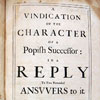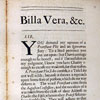Cabinet 02 - Dr Hocken’s ex libris
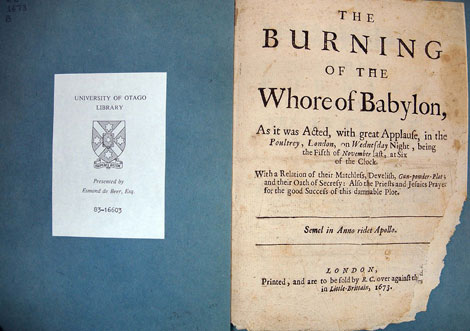
The London bookseller George Thomason (c.1601-66) assembled a large collection of pamphlets, newspapers and fugitive pieces dealing with the events surrounding the Revolutionary years of 1640 to 1661. Known as the Thomason Tracts, they number 22,255 pieces bound in 2,008 volumes. The Dunedin-born Esmond de Beer made a similar albeit smaller collection of pamphlets, with a particular focus on the Restoration, and his collecting interests around John Evelyn and John Locke. The Burning of the Whore of Babylon describes a ‘Guy Faux’ night in 1673 and is an excellent example of a 17th century pamphlet: small format, unbound, catchy title, cheap paper and print, and a quick read. Typical for its time, it is anti-Catholic. Perhaps it was ripped by an eager reader in one of the many London coffee-houses, places of gossip and seditious talk.
The Burning of the Whore of Babylon, as It was Acted, With Great Applause, in the Poultrey, London, on Wednesday Night, being the Fifth of November Last, at Six of the Clock. London: Printed, and are to be sold by R.C. over against the Globe in Little-Brittain, 1673. DeB Eb 1673 B. Special Collections.
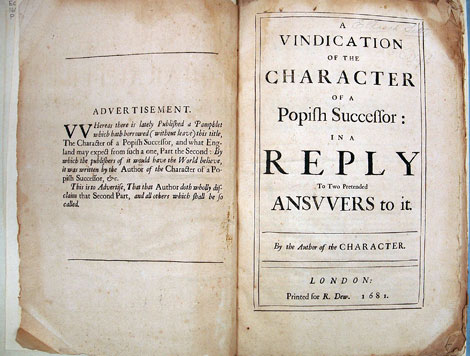
George Orwell once wrote that ‘a pamphlet is never written primarily to give entertainment or to make money. It is written because there is something that one wants to say now, and because one believes there is no other way of getting a hearing.’ The author of Vindication was the English poet and playwright Elkanah Settle (1648-1724), who certainly had the opportunity to get his invective into print. Indeed, with The Female Prelate (1680) and The Character of a Popish Successor (1681), Settle took delight at attacking Rome and fuelling the fear of a possible Catholic ruler in England. Vindication was his response to the high level of abuse he faced when The Character of a Popish Successor first appeared.
[Elkanah Settle], A Vindication of the Character of a Popish Successor: in a Reply to Two Pretended Answers to It. London: Printed for R. Dew, 1681. DeB Ec 1681 P. Special Collections.
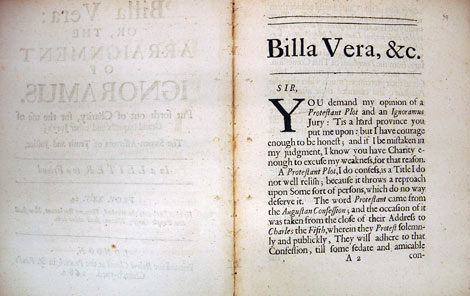
The short unbound, or loosely bound publications we know as pamphlets (less than 48 pages) suit topical subjects, especially if it they smack of propaganda and the polemic. And to compete with all the other pamphlets being hawked, the type on the title page was often large and varied, an attention-seeking device by the author (often anonymous), as well as giving at one glance a general idea of the contents. The conservative Bishop Laurence Womock (1612-1686) was known for his controversial writings in attacking the Whigs, Calvinism, and any threats to the status quo. Billa Vera (1682) is one of his many 60-odd pamphlets he produced. It not only has an eye-catching subtitle ‘Or, the Arraignment of Ignoramus’, but in true pamphlet style, the gatherings are rough stitched.
[Laurence Womock], Billa Vera: or, The Arraignment of Ignoramus. Put Forth Out of Charity, for the Use of Grand Inquests and Other Jury’s; The Sworn Assertors of Truth and Justice. London: Printed for Robert Clavel at the Peacock in St. Paul’s Church-yard, 1682. DeB Eb 1682 W. Special Collections.


